Traditional Indian Crafts From Ages
Indian arts and crafts have been popular since ancient India. Tribal people living in colonies made utility items with their hands to meet their daily requirements. These traditional crafts of India are known as Handicrafts and the items made were called local handicrafts.
Some of the popular Indian traditional products are Cane and Bamboo handicrafts, Pashmina shawla, Zardozi, Chikankiri, Bidriware metal handicrafts, block printing, mural art, etc.
Throughout centuries crafts have been embedded as a culture and tradition within rural communities. Crafts in India are diverse and rich in history, culture and religion. Throughout centuries crafts have been embedded as a culture and tradition within rural communities. Craft is the process of procession materials with the aim of creating something valuable.
Handicraft is the process of processing materials by hand with hand tools. The results can be both useful and decorative. The materials used in the product are natural, industrially processed, or recycled materials. Depending on the product's model, it may be old, new, conventional, or fashionable.
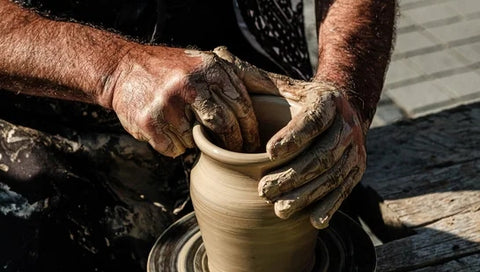
{image credit:- The Hindu}
The practice of handicrafts helps to transfer and preserve traditions from one generation to the next. Artists transfer ideas, forms, materials, and work methods from their cultural heritage into their work, much like their values, philosophy of life, fashion, and self-image. Craftspeople, commonly known as artisans, possess technical knowledge of materials and work methods. They’re skilled employees whose profession relies on manual skills. The power of their work strategies and their manual skills are their most potent tools.
Traditional Indian crafts have been passed down through generations, shaping the rich textile heritage we see today. From hand-done techniques to regional surface designs, these crafts are now easier to explore through fabric online platforms, where authentic dress material reflects the skill, patience, and cultural stories woven into every piece.
History of Indian crafts
One of the oldest cultures in the world is the practice of handicrafts. The Indus Valley Civilization, one of the world’s oldest civilizations, is the source of many handicrafts, including those made in India. The Indian handicrafts sector was thriving during the Middle Ages and kept expanding up until the arrival of the British. After the British and other colonial powers arrived in India, the handicrafts sector found it difficult to compete in the international market.
The handicrafts sector relied solely on ones manual dexterity, therefore producing something took time and effort. The price at which it was to be sold was therefore also high. However, because British goods produced by machines were less expensive, individuals soon started to turn to the British market.
The fact that the raw materials used to create different goods were drawn from nature, hence they were not meant to last for a long time, is another factor in why the British took over the handicrafts industry. Therefore, the technique used to extend the lifespan of the final items was time- and money-consuming. In India, there are numerous distinct kinds of handicrafts. But in this blog, we’ll focus on the three most significant and well-known Indian handicrafts. So without further ado, let’s get started.
At the first place on our list is the handicraft which has been present since the dawn of human civilization. Yes, you guessed it right, we are talking about Paintings.Throughout Indian history, paintings have been a part of the culture. There are a lot of cave paintings.
The Indian paintings such as the likes of Thangka Paintings, and Miniatures The greatest temptations for an art geek right now are paintings, including Wallis paintings, Madhubani paintings, and Tanjore paintings. The Indian handicraft industry’s painting techniques evolved over time and with each ruling dynasty. Since Mughal art forms predominated in Indian paintings during the mediaeval era, Stone Work is the second craft on our list of Indian handicrafts. People from all around the world have applauded the stonework and sculptures created by Indian artisans for millennia.
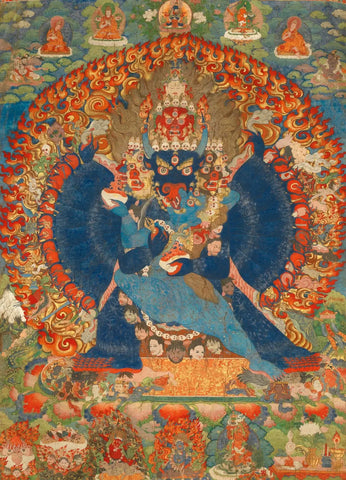
{image credit: Wikipedia}
These pieces have a lot to offer in terms of both use and beauty. The ships have a long history of being credited for creating elaborate patterns and decorations that were carved into temples all around India. Apart from the carvings on the walls of the famous temple, there are a lot of caves which are famous for their carvings as well. This handicraft mainly flourished in the mediaeval period, when the Kings of India, took a special interest in arts. The royal money was heavily invested in the construction of temples and caverns, and the sculptors received generous compensation.
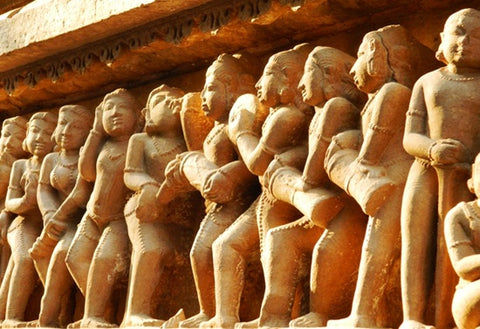
{image credit: Indian Eagle}
The design was traditionally created by the artists and meticulously etched into the walls of the caves and temples. The wooden crafts take the third spot on our list of handicrafts from India. Many might disagree with the third-place placement of woodwork, but since we are evaluating the significance of handicrafts overall, it is obvious that the Stone Works have a stronger argument.
The Wood Crafts of India are also pretty well known, though, it must be stated. In terms of the beginning of these handicrafts, they are a bit late. Upon realising that wood could be carved and chiselled, wood instantly became a medium for handicrafts. A handicraft’s skill level increased over time. This art was literally passed down from generation to generation throughout the nation. The use of wood and wood-like materials became increasingly popular for creating art. A combination of bamboo and tree wood was often used.
Various Types Of Indian Crafts
India has always been known for its traditions. In terms of art and culture, India ranks among the world’s most culturally wealthy nations. Throughout the world, Indian handicrafts are revered and admired. India has continued to maintain the artistic creations of many rural residents who rely on them for a living.
● Wood Carving
Handicrafts, art, and craftspeople all exist. Indian woodcarving is well-known worldwide. Wood was chopped, carved, and moulded by man for a variety of uses during the Palaeolithic era. These uses range from moving logs of wood over bodies of water to cooking with firewood to making furniture for homes and businesses out of the same wood. Wood carving has developed steadily over time, producing magnificent results. This is partly attributable to the accuracy of cuts made with the aid of machines. There is no doubting the attractiveness of handmade wood carvings, which have a certain beauty of their own. The artist’s preferred woods are cherry, teak, neem, cedar, fir, pine, rosewood, and sandalwood in addition to working with several varieties of wormwood. They add a completely new level to the work thanks to their versatility and vibrant colours and textures. It’s been claimed that an artist creates each unique piece with more than just his hands. We start to believe this a little bit more every time we see an artist at work in a natural material like wood.
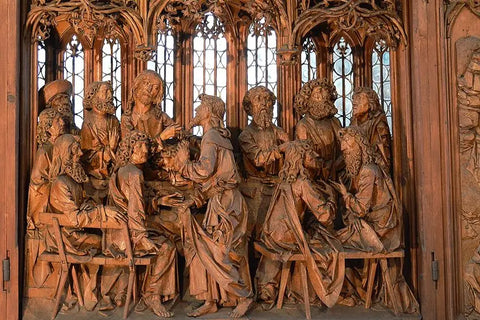
{image credit: Art in context}
Stone Masonry
India has been a country of arts and crafts since antiquity. Here, many artistic mediums—metal and nonmetal—have developed. Another one of these great skills in stone crafting. Stonecraft has a long history in India. Since the seventh century B.C., there have been guilds of stonecutters and masons here. Indian artisans use a variety of stones, including marble, soapstone, and sandstone. In India, stone carving is used to create a variety of objects, including carved panels, tiles, paperweights, pen stands, models of old buildings, sculptures of people and animals, and more. It is not just used to create elaborate carvings on temples or statues of gods. On the stone, the fundamental pattern is drawn and given a rough shape. On the stone, the fundamental pattern is drawn and given a rough shape. The objects are then polished when the last carving is completed.
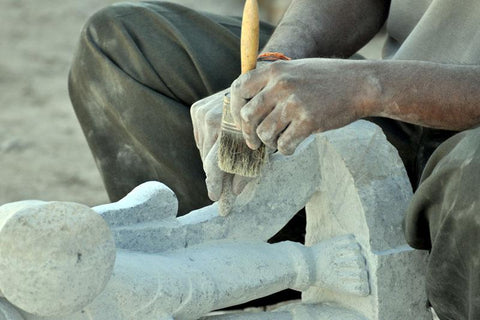
{image credit: d'source}
Painting
The vibrant, distinctive, and entrancing folk art and crafts of India are excellent examples of the great cultural diversity of Indian art. Different painting techniques are common in different areas, and each one represents tradition, customs, and philosophies that have been passed down from one generation to the next. The majority of Indian painting styles have historically been found as wall paintings or murals. Urbanisation eventually gave rise to these painting styles on materials including paper, canvas, and fabric. Indian painting techniques are a superb illustration of artistic expression through straightforward but distinctive compositions, not merely as a reflection of the native way of life.
Here are a few of the well-known Indian folk painting techniques:
● Paintings by Madhubani
The Madhubani style of Indian art, which began as wall art in the Mithila district of Bihar, is one of the most well-known.
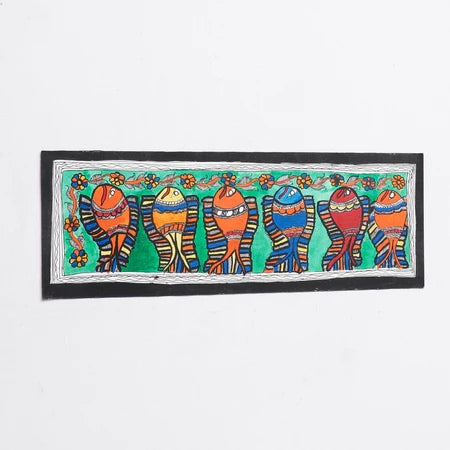
● Paintings by Warli
Warli paintings from Maharashtra Thane and Nasik regions intimately relate to the tribe's social customs and natural surroundings. The daily activities of the locals in that community, including farming, dancing, hunting, and prayer, are shown in warli paintings.
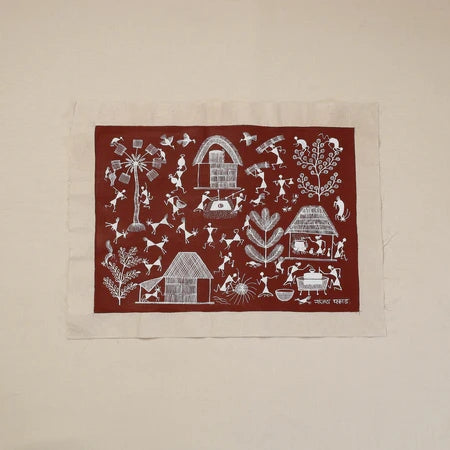
● Bengal Pat or the Kalighat Painting
In the area of the Kali Temple in Calcutta, in the middle of the 19th century, the Kalighat painting style emerged. The group of "patuas" who created these designs on paper is the source of the term Kalighata Pata. They evolved into the well-known kalighat style of painting by simply yet captivatingly depicting scenes of daily life and mythological deities. Indian earth tones like indigo, ochre, Indian red, grey, blue, and white are frequently used by Kalighat painters.
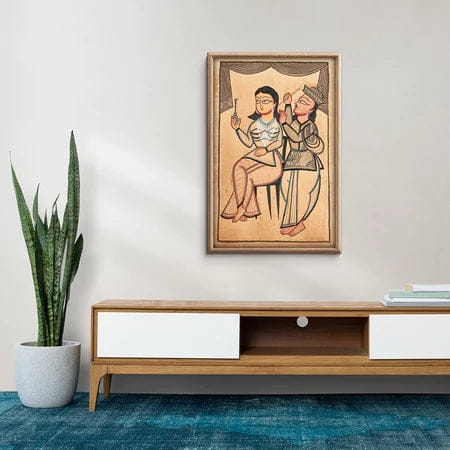
● Phad
The Rajasthani Phad Phad narrative scroll painting tradition has a thousand-year history. On horizontal fabric scrolls painted in red, yellow, and orange hues are tales of local deities and heroes. The Phad scrolls feature war scenes, thrilling tales, fabled romances, and the wealth of the Indian princely realms.
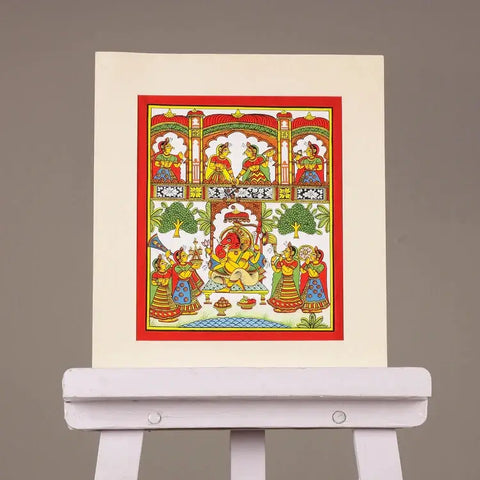
● Paintings in miniature
The Mughals introduced the miniature painting style to India in the 16th century, and it is recognised as a significant turning point in the development of Indian art. As a result of the blending of Islamic, Persian, and Indian components, it evolved into a distinctive style. Natural stone colours are used in the painting, done on a"wasli" made of paper. The miniatures incorporate gold, silver, conch shells, precious stones, and mineral colours.
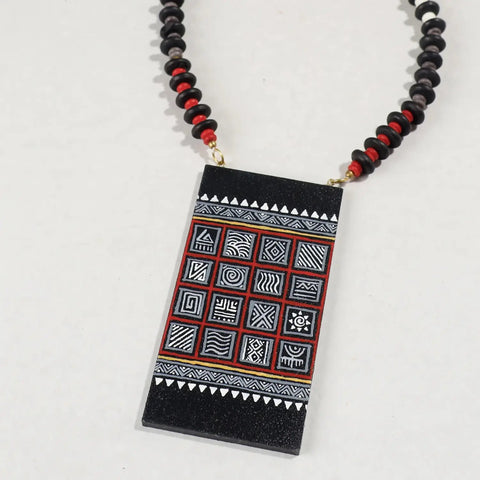
Metal Work
Indians have been skilled in the art of metalworking for close to 5000 years. The lovely Mohanjodaro photograph of the dancing girl demonstrates this. This shows the great calibre of craftsmanship that ancient artisans acquired. Historically, Indian artisans have been making sculptures of gods, legendary creatures, and animals from various metals, including iron, copper, silver, and alloys like bronze, bell metal, and white metal, among others.
Textiles
The beauty, texture, and tenacity of Indian textile traditions are renowned and admired worldwide. India has a varied and extensive textile history. The Indus valley civilisation is where Indian textiles got their start. The clothing of this culture was woven from cotton spun at home. Indian textiles were well-liked in the ancient world, and India had many trade connections with other countries. In the first years of the Christian era, Rome was a favoured destination for Indian silk. The Egyptian tombs of Fostat, dating from the fifth century A.D., were hordes of cotton fabric remnants from Gujarat.
The Rigveda, the Ramayana, and the Mahabharata, some of the oldest Indian
books and scriptures, mention the delicacy of Indian textiles. The rich textile
traditions of India are also evident in the ancient sculptures. Figures in elegant,
delicate, and ornamented clothing are shown in paintings. Among the most popular Indian exports were textiles, including cotton, muslin, silk, and others. Each Indian region has a distinctive textile that may be identified by its designs, weaving patterns, colours, and textures. Details about several Indian textile traditions are provided below.
Crafts Made By Indian Artisian In Different States
● Crafts of Bihar
The arts and crafts of Bihar stand out due to their natural beauty and exceptional ingenuity. Various materials, such as old stone, timber buildings, grasscloth, lacquer, and metal objects, have preserved these aesthetic marvels. Bihar's artisans have successfully created beautiful products that are much sought after both nationally and abroad. Pottery, wooden objects, metal and stone products, and jewellery. Some examples of modern crafts from Bihar include zari, kashida, sikki, moonj wares, wooden and clay toys, moonj wares, lacquer works, zari, inventive textile fabrics, and printing on cloth. These crafts are well-known for their artistic beauty and inventiveness in the Indian and global markets.
● Madhubani Painting
As suggested by their name, Madhubani paintings are particularly well-liked by females in the Mithila region of Bihar. Madhubani paintings initially appeared during the Ramayana. Initially, the painting was done on canvas, handmade paper, and cloth. The preponderance of the subjects in Madhubani paintings is Hindu religious figures and themes, as well as natural phenomena like the sun, moon and holy plants like tulsi.
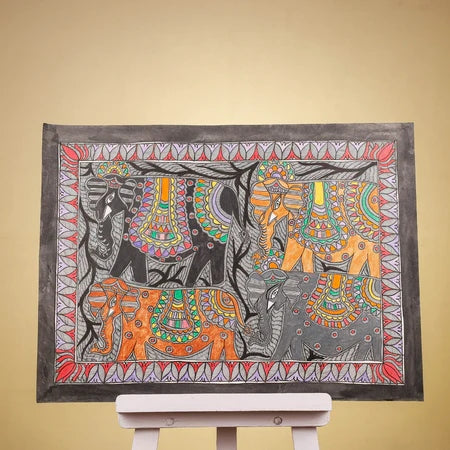
● Textile Printing
Textile printing is a Bihar art and craft that dates back as far as any other. Mainly well known in Patna is the method of creating chunris with images of parrots, peacocks, elephants, mangoes, conches, fish, and various deities.
● Crafts of Rajasthan
The well-known Indian state of Rajasthan is home to a vast variety of traditional arts and crafts, jewellery, and textiles that are perennial favourites among the elite. The handicrafts of Rajasthan are unrivalled in terms of their aesthetic appeal, technical excellence, and sheer variety. In addition to the palaces, forts, and camels,
Rajasthan is well known for its traditional Rajasthani crafts. It ranks among the top exporters of traditional Indian crafts. The unusual forms, brilliant hues, panoramic paintings, and skillfully crafted metals used as entertainment media are all hallmarks of Rajasthani crafts. Visitors come to Rajasthan from around the world to take in and treasure the region's rich history.
Blue Pottery
From Jaipur, Rajasthan, comes the well-known technique of blue pottery. It is a synthesis of Chinese glazing technology and Persian ornamental art. The name is derived from the vivid cobalt-blue dye used to create items like jewellery boxes, serving trays, flower vases, and dinnerware. They have colourful blue and golden bird, animal, and floral patterns. The quartz stone powder used in place of clay makes these handicrafts stand out. You may buy some of this artisanship in Jaipur, Rajasthan, at shops like Kuber Handicraft, Jawahar Kala Kendra, Heritage India, and Kripal Kumbh.
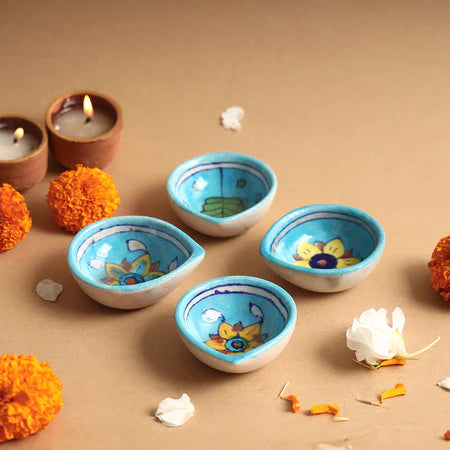
Textiles
Rajasthani textiles are in high and steadily rising demand in the global market. The variety of kaleidoscopic hues employed to create these textiles is mind-boggling. To give these handmade textiles a distinctive appearance, block printing, a variety of design techniques, and brilliant colours are used. Bandhani textiles are well-known in Jaipur, Udaipur, Jodhpur, Pali, and Nathdwara for their amazing print and textures. Turbans, odhnis, scarves, and shawls are a few additional well-known Rajasthani handicrafts.
● Crafts of Gujarat
The life of Gujarati people revolves around handicrafts. Gujarat's collection of arts and crafts serves as a reflection of the state's variety. Gujarat has distinct artistic specialisations in every district. Gujarati handicrafts are a lovely fusion of embroidery, colour, design, and stitching. Gujarat offers various luxurious handicrafts, from vibrant tie-dye to elegant wooden antiques. Take a trip to Gujarat if you have a strong interest in handicrafts.
Bandhani (Tie-dye dress materials)
Bandhej or Bandhani, the fabrics used to make tie-dye dresses, are made in patterns like Chokidal, which has geometric patterns and elephant prints, and Kambaliya, which has a design in the centre and detailed border patterns.
Patola (Patterned textiles/sarees)
Patolas are silk sarees that have been double-ikat dyed and are woven with intricate designs. These are some of Gujarat's best hand-woven sarees.
Beadwork
Gujarat is known for its mastery of the craft of beadwork, which is used to embellish clothing to increase its appeal. Beadwork creates hanging chaklas, Indhonis, Mangal Kalash, nariyal, artefacts, necklaces, bangles, earrings, ornaments, motifs, and torans. The tribal groups in Dahod, Vadodara, and Panchmahals produce the majority of native beading.
● Crafts of Odisha
Odisha is proud of its lavish art and craft, which will win people over. The art and craft of Odisha, a significant component of the state's tourism industry, exhibits the strong talents of the artisans and the influence of a rich culture. Odisha is one destination in India that is suitable for every shopaholic or cultural connoisseur. It offers beautiful stone carving, the traditional art of Pattachitra, carving pictures in the sand, silver filigree, and world-renowned appliqué. Odisskills arts and crafts are a cultural legacy that helps people get to know this amazing east Indian state.
Pattachitra
One of India's most well-known living art forms, Pattachitra is an icon painting that is thought to have its roots in the first half of the 12th century. In Odisha, it is regularly practised by locals.
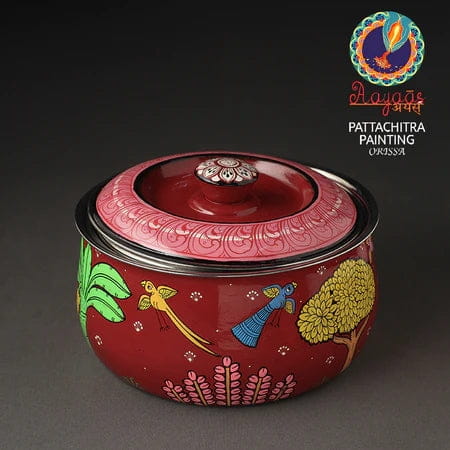
Silver Filigree Work
Silver Filigree Work is arguably the most distinctive and exquisite of all the arts produced in Odisha. Local artists, mainly in Cuttack, practise this more than 500-year-old art form. This magnificent artwork falls primarily into the areas of ornaments and ornamental goods.
Bell Metal And Brass Handicrafts
Ball Metal and Brass Handicraft, a significant indigenous art produced by the Kansari and Dhokra castes in Odisha, is a well-known dhokra craft that creates a variety of furniture and home accents.
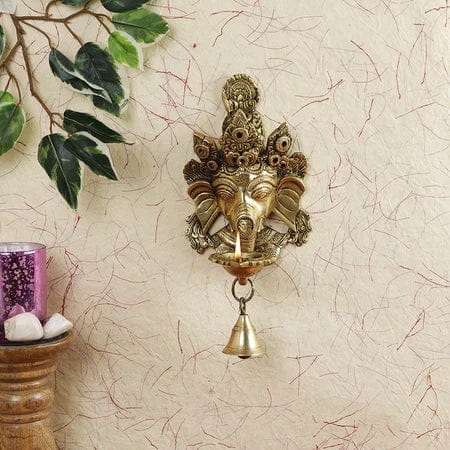
● Crafts of West Bengal
Many excellent craftspeople in India call West Bengal home. Art aficionados from around the world adore Bengali crafts for their distinctive rustic and ethereal appeal. The state specialises in several types of crafts, including metal crafts, sculpture, needlework, and sketching. The centuries-old traditional arts of West Bengal have been so skillfully adapted to meet modern needs that these craftspeople, in addition to their traditional abilities, are now experts in the art of surviving. Even if you don't know much about arts and crafts, you'll be enthralled by West Bengal's distinctive handicrafts. Please tell us more about them.
Kantha Embroidery
West Bengal gave birth to the charming needlework style known as Kantha. In essence, it uses colourful threads and running stitches to outline beautiful motifs on clothing. It is used on clothing like saris, dhotis, kurtas, bed linen, cushion coverings, quilts, and ethnic wear for both men and women. The Bengal Kantha stitch is popular among international visitors and works well on cotton and silk.

Clay Dolls
The Bengali dolls, also called putul, are extremely popular in Europe. They reflect rural Bengal and are made of clay, painted in brilliant colours, and baked in a kiln. The most famous clay dolls in Bengal are those made at Krishna Nagar, which reflect a variety of social settings, including the Collector's court, a tea garden, a pandit sabha, and the Charak festival.
● Crafts of Jammu and Kashmir
When it comes to Jammu and Kashmir, the long-standing, rich legacy of creativity and art doesn't need an introduction. Silk and wool carpets, papier-mâché goods, Pashminas, embroidered shawls, copper-ware, silverware, a variety of stones, and walnut wood products are just a few of Kashmir's well-known handcrafted delicacies. Kashmir is regarded as a gold mine for arts and crafts. Although each region tends to have its unique specialisation, Kashmiri silverware, papier-mâché sculptures, and carpets are renowned worldwide for their high calibre and craftsmanship.
Pashmina
One of Kashmir's most well-known crafts is pashmina weaving. Inevitably, Kashmir comes to mind when you hear the name Pashmina. From protecting from Kashmir's bitter cold to becoming an excellent luxury item, pashmina has come a long way.
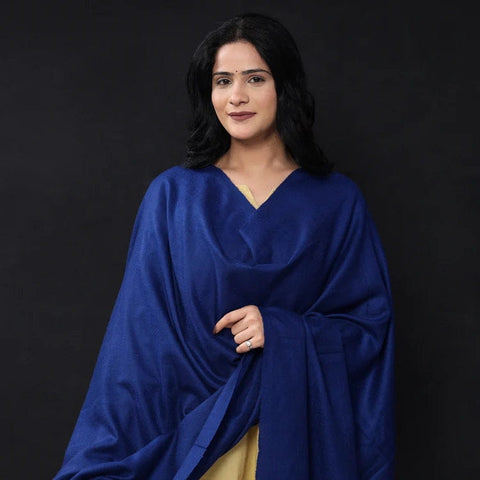
Wood Carvings of Kashmir
The base on which artisans display the quality of their woodcarving in Kashmir is the wood from the native walnut trees. The walnut tree produces solid wood that is ideal for creating labour-intensive items. There are many things made from wood carvings. Large objects like study tables, dining tables, nightstands, cupboards, and mattresses are created through wood carving. Tourists should choose smaller products like jewellery boxes, pen stands, trays, bowls, spoons, and other beautiful objects to bring home. The delicate nature of these wood carvings reveals the effort the craftspeople put into them. Such meticulous handiwork is brought to life by the colour and layering of the components.
Indian Economy and the Role of Handicrafts
- Indian Arts and Crafts fascinate everyone with their unique charm and intriguing craft. The huge Indian Crafts industry is the source of livelihood for over 130 lakh artisans and weavers.
- Local handicrafts is an environment-friendly industry that works on low energy.
- Indian Crafts are a source of the company’s foreign exchange year after year.
- The traditional handicrafts of India represent the rich cultural heritage of our country. They promote Indian arts and crafts by using indigenous raw materials skillsets.
- The Indian Crafts industry plays an integral role in the Rural Economy of the country. Additionally, the demand for Indian handloom exports is rising each year.
Some Interesting Facts About The Traditional Handicrafts Of India
- The local handicrafts industry of India is witnessing a 20% growth every year.
- The Industry majorly operates in the semi-urban and rural areas of the country. And have a vast domestic and international market for their products.
- The traditional handicrafts of India employ people from the rural sector and backward areas with a majority of artisans being women. It is the major source of livelihood for the people of these backward areas.
- The share of the traditional handicrafts of India in the exports of the country is Rs. 13412.92 Crore. Which comes out to be 1.51%
- Major parts of the industry operate in rural and semi-urban areas throughout the country and have potential Indian and International markets with around 67000 exporters to tap the market.
- According to the national census of handicrafts, undertaken by the National Council for Applied Economic Research the value of handicrafts produced last year was of Rs. 26,213 Crore.
- This Industry provides huge employment opportunities to artisans including women and people belonging to backward and weaker societies. This is one of the major sources of income there.
- The Indian Handicraft Industry is a $100 billion industry worldwide.
- India’s contribution to the world market is 1.2%
- The total exports of crafts items: – Rs. 13412.92 Crore.
- Industry’s share in India’s exports: – 1.51 %
Importance of Arts and Crafts in School Curriculum
For children and young children in the formal education system, arts and crafts are often taken for granted as a required subject in the school curriculum. Unfortunately, many schools have decreased the amount of skills instruction in their curricula during the past few years. Theater, art, and music are quickly vanishing.
Arts and crafts are, without a doubt, enjoyable hobbies for kids. Many arts and crafts activities can pique children's attention and maximise their artistic ability, whether it be colouring with crayons, creating tiny clay statues, folding paper to make beautiful origami, or creating a hand-made birthday card.
Physical Benefits
Acquiring fine motor skills
Since most arts and crafts include moving hands and fingers, they aid in developing fine motor skills. Simple exercises like holding a paintbrush and using pencils to colour increase muscle control and strength.
Enhanced hand-eye coordination
Hand-eye coordination significantly improves when children participate in arts and crafts activities from a young age. This will assist a youngster as they construct letters or space out words in later elementary school years.Social BenefitsRecognize and value culture and the arts.
Through arts and crafts, children learn to value and appreciate items and imagery from various cultures and eras. They can critically evaluate both their work and that of others, thanks to their experience in design, art, and crafts. They get the ability to operate logically and artistically while acting and thinking like designers and artists. They gain knowledge about historical protection as well. Our current understanding of humans who lived millions of years ago is mainly based on art.
Aids in socialisation
Children can interact with people while sharing common interests when participating in art class with other kids. Arts and crafts activities also improve parent-child relationships.
Cognitive Advantages
Increases imagination
Giving kids the freedom to make whatever they want encourages creativity. Improves one's ability to make decisions
By overcoming and overcoming creative hurdles, a youngster will learn to make wise and valuable decisions. This fosters the growth of a problem-solving mindset in children, which will benefit them later.
Contribution Of iTokri To Encourage Indian Crafts And Craftsmen
As a business, iTokri is committed to relieving artisans of the stress of sales and promoting their concentration on their craft while ensuring they receive proper credit for their work by allowing them to sell goods on our platform in their names. We must never lose sight of the fact that artisans are the actual creators, and they must always be given the ability to express themselves artistically. Businesses should work to preserve and improve their traditional ways of life. A crucial component of our social structure is the artist. Today, every entrepreneur and other business in India is accountable for this. To take advantage of the chance to connect numerous artisans with their customers and ensure that every product is of the highest quality, many firms now employ the Stock & Sell Model, where the goods/products physically remain with the company even after they are sold.
Faqs
- What is the oldest handicraft in India?
The oldest handicraft dates back to the ancient Harappa Civilization. Crafts like sculpture(in stone, metal, and terracotta), pottery, weaving, and jewellery have been popular since the earlier Vedic Age.
- What are the 3 types of famous Indian crafts?
India is a country with a rich cultural heritage and a vast pool of skilled artisans producing exclusive handcrafts. There are several crafts in the country that are produced in different regions. Three of the popular Indian crafts are Kalamkari Print, Madhubani Painting, and Chanderi Craft. You can visit iTokri to shop from their collection of handcrafted items.
- What are 5 famous art of today's India?
In a culturally rich country like ours, each region is famous for its unique culture, art, and folk. 5 famous art forms in India are Madhubani Painting, Kalamkari Painting, Gond Painting, Kerala mural art, and Phad Paintings.
Blogs you might also like:
Stunning “Phad” Art from Rajasthan
Meenakari - A Craft With Poetry On Metal
Madhubani Paintings - A Brief Story of the Art
In a Corner of Bengal, a Village That 'Looks Like an Art Gallery'
 Verified Purchase
Verified Purchase



















































































































































































































Introduction of Art Form india
Liquid error (sections/custom_blog_posts line 652): The format option 'month_day_year' is not a supported format.
Good